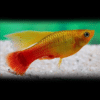To provide the best experiences, we use technologies like cookies to store and/or access device information. Consenting to these technologies will allow us to process data such as browsing behaviour or unique IDs on this site. Not consenting or withdrawing consent, may adversely affect certain features and functions.
The technical storage or access is strictly necessary for the legitimate purpose of enabling the use of a specific service explicitly requested by the subscriber or user, or for the sole purpose of carrying out the transmission of a communication over an electronic communications network.
The technical storage or access is necessary for the legitimate purpose of storing preferences that are not requested by the subscriber or user.
The technical storage or access that is used exclusively for statistical purposes.
The technical storage or access that is used exclusively for anonymous statistical purposes. Without a subpoena, voluntary compliance on the part of your Internet Service Provider, or additional records from a third party, information stored or retrieved for this purpose alone cannot usually be used to identify you.
The technical storage or access is required to create user profiles to send advertising, or to track the user on a website or across several websites for similar marketing purposes.
 Red Devil Vampire Crab - Geosesarma Hagen - Decapod Crustacean
2 × £8.71
Red Devil Vampire Crab - Geosesarma Hagen - Decapod Crustacean
2 × £8.71 












Emily Carter (verified owner) –
I recently purchased 10 Red Moon Platies, and I couldn’t be happier! After about a week in my 20-gallon tropical fish tank, they have settled in beautifully. Their vibrant colors and playful nature have really brought my aquarium to life. I was initially concerned about integrating them with my existing fish, but they are such friendly little livebearers that they’ve already made buddies with my guppies!
These platy fish are perfect for anyone looking to brighten up their tank without worrying too much about compatibility. They’re hardy and do well in a range of water conditions, which is a huge plus for someone like me who enjoys a low-maintenance setup.
If you’re contemplating between these and another variety, I found that their colors are simply unmatched, and they’re quite active swimmers, constantly engaging with each other. My only minor concern is that they do have a tendency to get a little shy during feeding times, so I recommend adding some floating plants for cover. Overall, I would highly recommend these beautiful fish to both beginners and experienced aquarists alike. They add joy and vibrancy to any aquarium setup!
Emily Carter (verified owner) –
I recently added 10 Red Moon Platies to my 55-gallon community tank, and I couldn’t be happier! These stunning tropical fish have brought a burst of color and energy to my aquarium. They settled in beautifully after just a few days and have been active little swimmers ever since. I love how they interact with each other and my other fish—no signs of aggression at all, which makes them perfect companions for a peaceful setup.
One thing that really impressed me was their adaptability. I’ve had them for about three weeks now, and they’ve thrived in various water conditions. Their vibrant colors, especially the males, are absolutely mesmerizing and really stand out against the plants in my tank.
If you’re considering adding some freshwater fish to your aquarium, these platies are a fantastic choice! They are not only gorgeous but also easy to care for. Just a minor note: I did notice a bit of fin nipping from a few of my more aggressive fish, so keep an eye on their interactions. Overall, I highly recommend the Red Moon Platies for anyone looking to enhance their tropical fish experience!